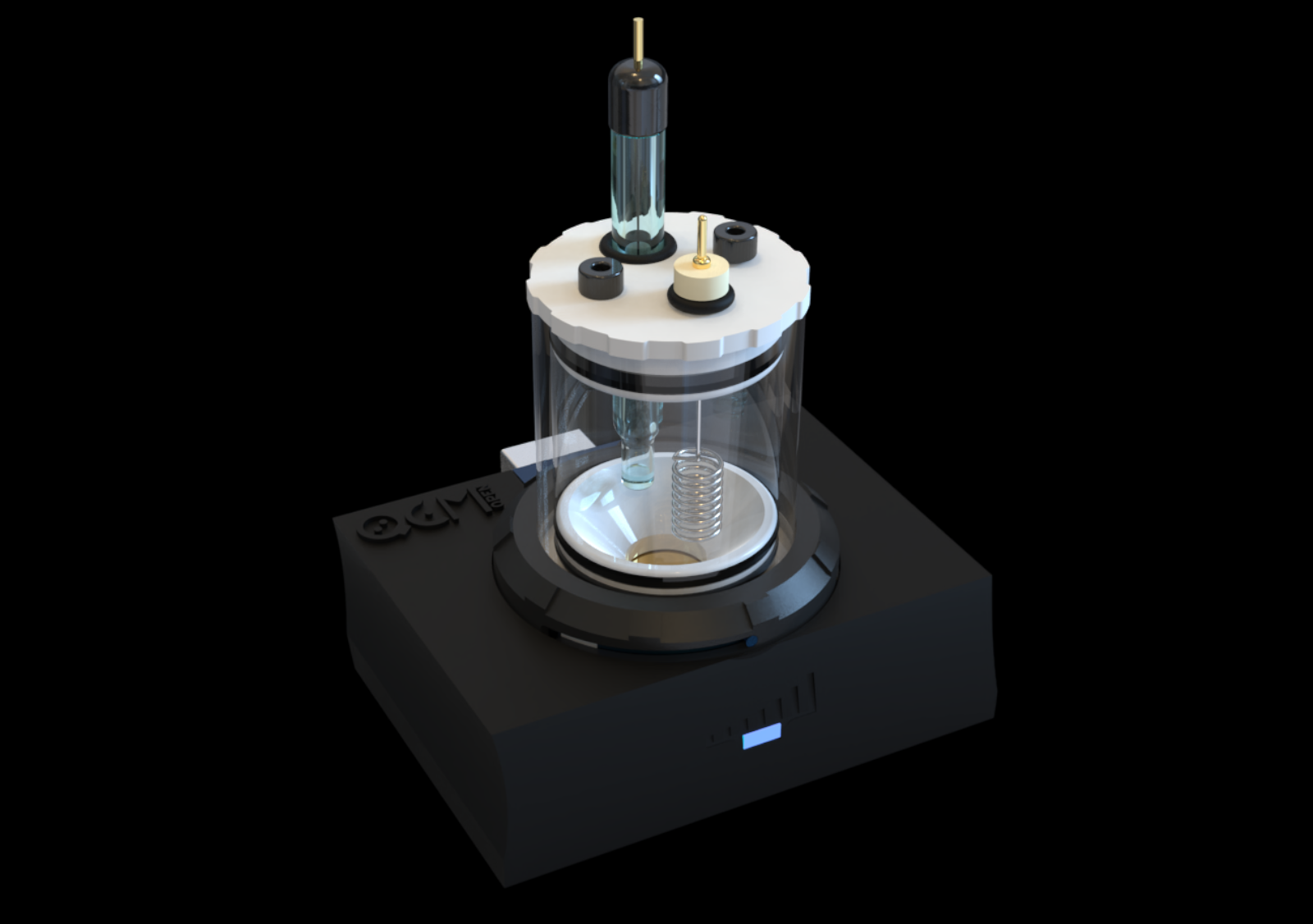FAQ Menu
Design and Hardware
The openQCM window cell has two holes for tubing connection in application with liquids. If you look closely at openQCM cell window, you can see that the holes are slightly different. One of them is larger than the other. The dimensions of the of the inlet and outlet holes are the following:
- Inlet dimensions – larger hole
ID = 0.9 mm
OD = 1.8 mm - Outlet dimensions – smaller hole
ID = 0.6 mm
OD = 1.6 mm
The precision machining is mainly due to the CNC milling machine that we used for making the window cell.
We generally use Tygon® 2375-C high-purity tubing, manufacturer Saint-Gobain part number AJK00002. You can find the tubing technical specifications here
The tubing feautures chemical resistance, clarity and flexibility. They are also unaffected by acids, bases, ketons, slats and alcohols
You should use tubing whose outer diameter is OD = 3.2 mm and internal diameter is ID = 1.6 mm.
If you are using openQCM with a peristaltic pump we suggest to use a smaller tube for the one in the peristaltic pump, for example Tygon tubung ID = 0.51 mm. Actually you can reduce the frequency fluctuations by reducing the tube diameter in the peristaltic pump.
Yes of course you can ! openQCM is very effective in application with flowing liquids.
You can use the peristaltic liquid pump designed by Adafruit product id:1150. It works quite fine with openQCM. You should use an external power supply at 12VDC and connect inlet – outlet tubing for flowing the sample into the openQCM measurement chamber.
The openQCM hardware case is 3D-printed using Nylon material. It is heatproof to 80°C and higher temperatures may significantly change material properties. The case material datasheet is available at this link
The window cell is made in Polymethyl methacrylate (PMMA), Plexiglas trade name. The melting point is about 150° C, also you need to pay attention to the coefficient of thermal expansion which is roughly αV = (5–10)×10−5 K−1
The couple of O-rings in the measurement chamber is made in Silicone temperature range -60 to +200°C RS Stock No.527-9790 Brand RS Mfr. Part No.BS011 SIL70 The O-ring datasheet is available at this link
Electronics
It is recommended to use the Arduino board and the openQCM shield in the working temperature range -40°C to 85°.
The I2C T sensor actually measures the temperature inside the openQCM device. In fact the sensor is embedded in the openQCM shield inside the hardware case, between the arduino micro and quartz crystal sensor. It is important to monitoring the temperature because the quartz sensor frequency depends on the variations in temperature.
Frequency behaviour
Commonly, in a well set system the drifts are negligible.
In any way, the drift can occur for a number of different reasons.
The most common cause is due to temperature variations. For this reason openQCM mounts a temperature sensor, by which it is possible to verify in real time experimental thermal conditions.
General Questions
Absolutely yes! Despite openQCM is a low-cost device its accuracy and stability is fully comparable with most common scientific devices today present in the market.
openQCM is designed by a research team with years of experience in the mass sensors development. As matter of fact, openQCM team collaborate at calibration of QCMs onboard the ESA-ROSETTA space mission and developed a lot of scientific qcm and MEMS devices for space, biology, electrochemistry applications, etc.
openQCM is a Quartz Crystal Microbalance whose design was conceived for use in air, in liquid and in vacuum. If you want to use the device in gaseous environment it is sufficient to remove the magnetic sealing chamber. So you will be able to use openQCM without further modification.
The high affordable cost and its easy of use makes openQCM the best choice for educational purposes. For degree student or for every level of school, this Quartz Crystal Microbalance device will increase the learning experience.
Software
You should update the Arduino driver. You can download the Arduino driver at this link drivers-arduinoIDE-1.0.6-x86.zip Unzip the folder and install the drivers.
Windows 8 OS driver digitally signed known issue
Sometimes Arduino is not recognized by Windows 8, because the driver is not digitally signed. In this case you should follow this tutorial.
Firstly you should verify that the Arduino driver is correctly installed on your computer.
If the Arduino driver is ok, in order to upload the openQCM arduino skecth you should add the external library FreqCount developed by Paul Stoffregen. Download the FreqCount library at this link and follow the Arduino guide Installing Additional Arduino Libraries in order to install the library.
Yes it is. openQCM application software runs on the most common operating system Windows, Mac and Linux. For more info please follow the installation guide
General Questions
Absolutely yes! Despite openQCM is a low-cost device its accuracy and stability is fully comparable with most common scientific devices today present in the market.
openQCM is designed by a research team with years of experience in the mass sensors development. As matter of fact, openQCM team collaborate at calibration of QCMs onboard the ESA-ROSETTA space mission and developed a lot of scientific qcm and MEMS devices for space, biology, electrochemistry applications, etc.
openQCM is a Quartz Crystal Microbalance whose design was conceived for use in air, in liquid and in vacuum. If you want to use the device in gaseous environment it is sufficient to remove the magnetic sealing chamber. So you will be able to use openQCM without further modification.
The high affordable cost and its easy of use makes openQCM the best choice for educational purposes. For degree student or for every level of school, this Quartz Crystal Microbalance device will increase the learning experience.


